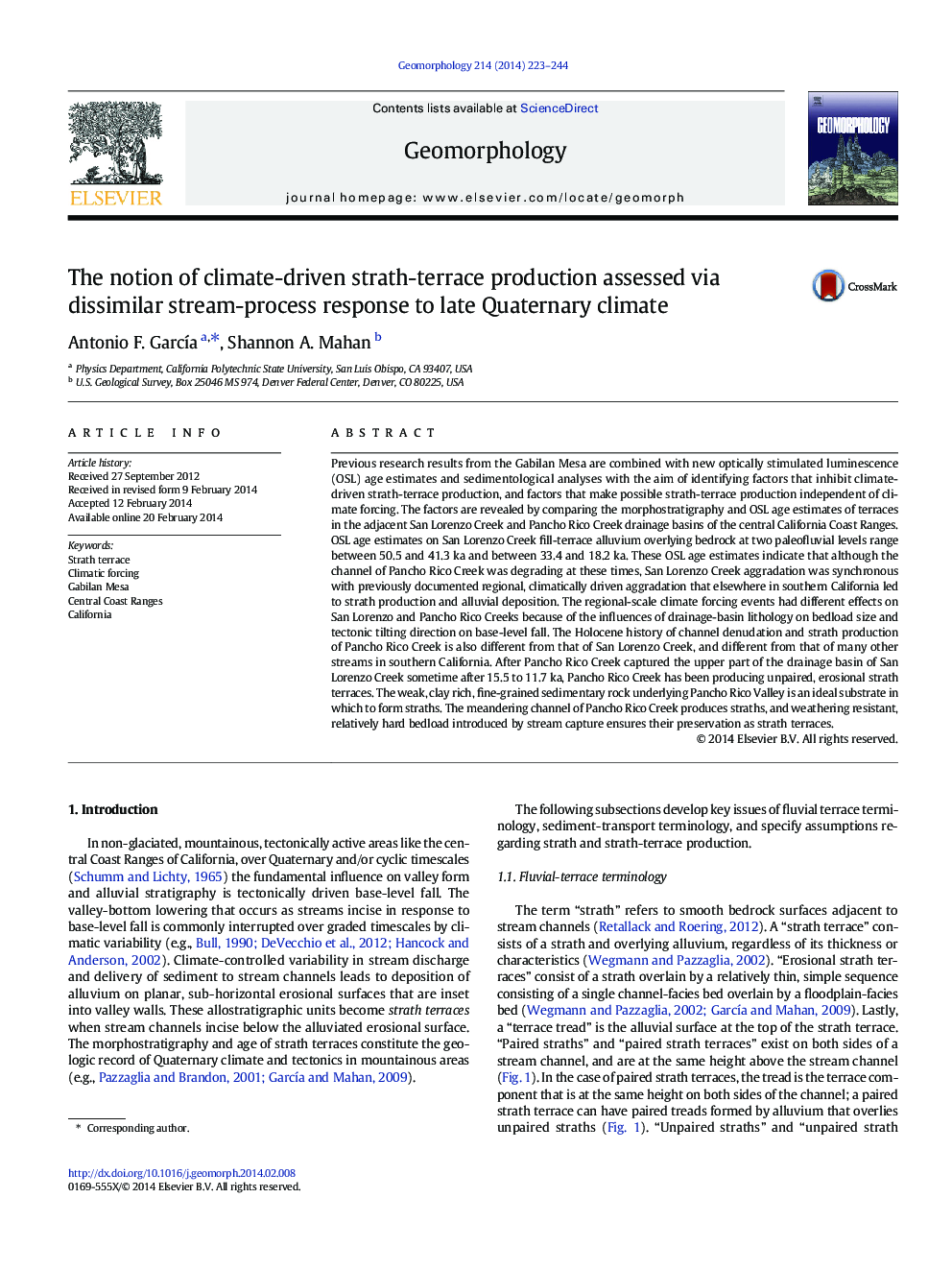| کد مقاله | کد نشریه | سال انتشار | مقاله انگلیسی | نسخه تمام متن |
|---|---|---|---|---|
| 6432554 | 1635435 | 2014 | 22 صفحه PDF | دانلود رایگان |
- Climatically forced strath-terrace production has prevailed along San Lorenzo Creek.
- Holocene strath terraces along Pancho Rico Creek formed independently of climate.
- Factors inhibiting climatically driven strath-terrace production are identified.
- Factors facilitating climate-independent strath-terrace production are identified.
- Bedload lithology and tectonic style influence stream response to climate forcing.
Previous research results from the Gabilan Mesa are combined with new optically stimulated luminescence (OSL) age estimates and sedimentological analyses with the aim of identifying factors that inhibit climate-driven strath-terrace production, and factors that make possible strath-terrace production independent of climate forcing. The factors are revealed by comparing the morphostratigraphy and OSL age estimates of terraces in the adjacent San Lorenzo Creek and Pancho Rico Creek drainage basins of the central California Coast Ranges. OSL age estimates on San Lorenzo Creek fill-terrace alluvium overlying bedrock at two paleofluvial levels range between 50.5 and 41.3Â ka and between 33.4 and 18.2Â ka. These OSL age estimates indicate that although the channel of Pancho Rico Creek was degrading at these times, San Lorenzo Creek aggradation was synchronous with previously documented regional, climatically driven aggradation that elsewhere in southern California led to strath production and alluvial deposition. The regional-scale climate forcing events had different effects on San Lorenzo and Pancho Rico Creeks because of the influences of drainage-basin lithology on bedload size and tectonic tilting direction on base-level fall. The Holocene history of channel denudation and strath production of Pancho Rico Creek is also different from that of San Lorenzo Creek, and different from that of many other streams in southern California. After Pancho Rico Creek captured the upper part of the drainage basin of San Lorenzo Creek sometime after 15.5 to 11.7Â ka, Pancho Rico Creek has been producing unpaired, erosional strath terraces. The weak, clay rich, fine-grained sedimentary rock underlying Pancho Rico Valley is an ideal substrate in which to form straths. The meandering channel of Pancho Rico Creek produces straths, and weathering resistant, relatively hard bedload introduced by stream capture ensures their preservation as strath terraces.
Journal: Geomorphology - Volume 214, 1 June 2014, Pages 223-244
